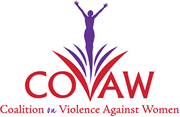The Kwale Girls Project is a three year project, that has been working in a consortium of three other organizations: COVAW, Build Africa Kenya and KWEA. The project aims to, have a change in values and beliefs held by community members, and good quality gender sensitive education is accessed by girls.
The project is being implemented in three sub – counties in Kwale; Kinango, Msambweni and Lunganga.
These are further divided into 10 clusters: Kinango, Gandini, Ndavaya, Samburu, Mazeras, Diani, Msambweni, Mwereni Kikoneni and Lungalunga.
The project seeks to improve the quality of primary education in 72 schools, focusing on the educational needs of disadvantaged girls, ensuring good quality learning experiences and addressing barriers that stop girls attending, participating and attaining primary school.
The Key OUTCOMES of the project are:
- Communities acknowledge and have increased capacity to address violence and abuse against girls.
- Community attitudes towards girls education is improved, creating an environment where girls are supported to access the complete school.
- Girls have increased understanding about opportunities available to them, improving their aspirations and becoming positive role models.
- Adoption of child friendly and gender sensitive teaching methods
Project Activities
Teachers:
- Gender sensitive teacher toolkit and training
- Learning visits for teachers
- Guidance and counseling training
Parents:
Community:
- Recruit and train key community activists
- Initiate empowerment campaigns
- Establish and support boys clubs
- Support public interest litigation cases
Girls:
- Establish and support girls clubs
- Learning visits to secondary schools
- Role model visits from local women
- Establish and support out of schools girls clubs
Target Beneficiaries:
- 26,020 primary school aged girls
- 724 teachers and school staff members
- 37,481 parents, boys and community members
- 72 school communities
